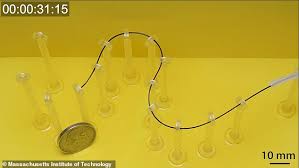
Breaking News
 Make Your Own Seasoned Rice Mixes!
Make Your Own Seasoned Rice Mixes!
 NASA Reveal Highest Resolution Visible Light and Infrared 3I/Atlas Images
NASA Reveal Highest Resolution Visible Light and Infrared 3I/Atlas Images
 We're evolving too slowly for the world we've built, according to science
We're evolving too slowly for the world we've built, according to science
 There Are No Easy Fights In The Struggle Against The Empire
There Are No Easy Fights In The Struggle Against The Empire
Top Tech News
 New Gel Regrows Dental Enamel–Which Humans Cannot Do–and Could Revolutionize Tooth Care
New Gel Regrows Dental Enamel–Which Humans Cannot Do–and Could Revolutionize Tooth Care
 Researchers want to drop lab grown brains into video games
Researchers want to drop lab grown brains into video games
 Scientists achieve breakthrough in Quantum satellite uplink
Scientists achieve breakthrough in Quantum satellite uplink
 Blue Origin New Glenn 2 Next Launch and How Many Launches in 2026 and 2027
Blue Origin New Glenn 2 Next Launch and How Many Launches in 2026 and 2027
 China's thorium reactor aims to fuse power and parity
China's thorium reactor aims to fuse power and parity
 Ancient way to create penicillin, a medicine from ancient era
Ancient way to create penicillin, a medicine from ancient era
 Goodbye, Cavities? Scientists Just Found a Way to Regrow Tooth Enamel
Goodbye, Cavities? Scientists Just Found a Way to Regrow Tooth Enamel
 Scientists Say They've Figured Out How to Transcribe Your Thoughts From an MRI Scan
Scientists Say They've Figured Out How to Transcribe Your Thoughts From an MRI Scan
 Calling Dr. Grok. Can AI Do Better than Your Primary Physician?
Calling Dr. Grok. Can AI Do Better than Your Primary Physician?
'Worm-like' robot that crawls through the brain could treat stroke patients by clearing...

A tiny worm-like robot has been developed to treat stroke patients by clearing blood vessel blockages and delivering drugs directly to the brain.
The 0.5mm-wide wire is driven through the body using magnetic fields which can be computer controlled from outside the room.
Although it hasn't yet been tested on a human patient, engineers have proved its functions on a miniature obstacle course and in a life-size model of the brain.
They hope it will one day be used to treat people with life-threatening bleeding or blockages in the brain and speed up therapy to save vital moments.
Scientists at the Massachusetts Institute of Technology in Boston developed the miniscule snake-like robot, which is a few centimetres long.
It's made of a flexible mix of nickel and titanium and coated with a lubricating hydrogel which helps it to slip through tight tubes without damaging tissue.

 Unbanked In A Connected World
Unbanked In A Connected World

